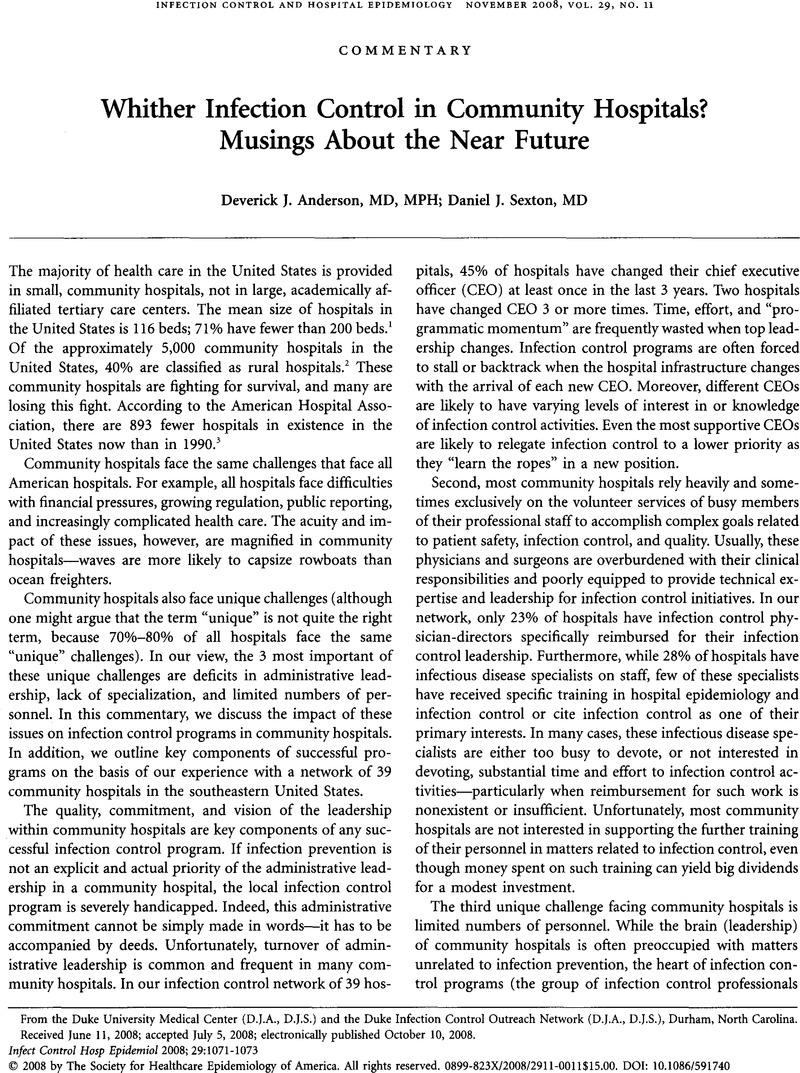Crossref Citations
This article has been cited by the following publications. This list is generated based on data provided by Crossref.
Anderson, Deverick J.
Miller, Becky A.
Chen, Luke F.
Adcock, Linda H.
Cook, Evelyn
Cromer, A. Lynn
Louis, Susan
Thacker, Paul A.
and
Sexton, Daniel J.
2011.
The Network Approach for Prevention of Healthcare-Associated Infections: Long-Term Effect of Participation in the Duke Infection Control Outreach Network.
Infection Control & Hospital Epidemiology,
Vol. 32,
Issue. 4,
p.
315.
Miller, Becky A.
Chen, Luke F.
Sexton, Daniel J.
and
Anderson, Deverick J.
2011.
Comparison of the Burdens of Hospital-Onset, Healthcare Facility-Associated Clostridium difficile Infection and of Healthcare-Associated Infection due to Methicillin-Resistant Staphylococcus aureus in Community Hospitals.
Infection Control & Hospital Epidemiology,
Vol. 32,
Issue. 4,
p.
387.
Kang, JaHyun
Mandsager, Paul
Biddle, Andrea K.
and
Weber, David J.
2012.
Cost-Effectiveness Analysis of Active Surveillance Screening for Methicillin-ResistantStaphylococcus aureusin an Academic Hospital Setting.
Infection Control & Hospital Epidemiology,
Vol. 33,
Issue. 5,
p.
477.
Harrod, Molly
Manojlovich, Milisa
Kowalski, Christine P.
Saint, Sanjay
and
Krein, Sarah L.
2014.
Unique Factors Rural Veterans’ Affairs Hospitals Face When Implementing Health Care‐Associated Infection Prevention Initiatives.
The Journal of Rural Health,
Vol. 30,
Issue. 1,
p.
17.
Broom, Alexander
Broom, Jennifer
Kirby, Emma
Gibson, Alexandra
and
Davis, Mark
2017.
Antibiotic optimisation in ‘the bush’: Local know-how and core-periphery relations.
Health & Place,
Vol. 48,
Issue. ,
p.
56.
Advani, Sonali D
Sickbert-Bennett, Emily
Moehring, Rebekah
Cromer, Andrea
Lokhnygina, Yuliya
Dodds-Ashley, Elizabeth
Kalu, Ibukunoluwa C
DiBiase, Lauren
Weber, David J
and
Anderson, Deverick J
2023.
The Disproportionate Impact of Coronavirus Disease 2019 (COVID-19) Pandemic on Healthcare-Associated Infections in Community Hospitals: Need for Expanding the Infectious Disease Workforce.
Clinical Infectious Diseases,
Vol. 76,
Issue. 3,
p.
e34.



